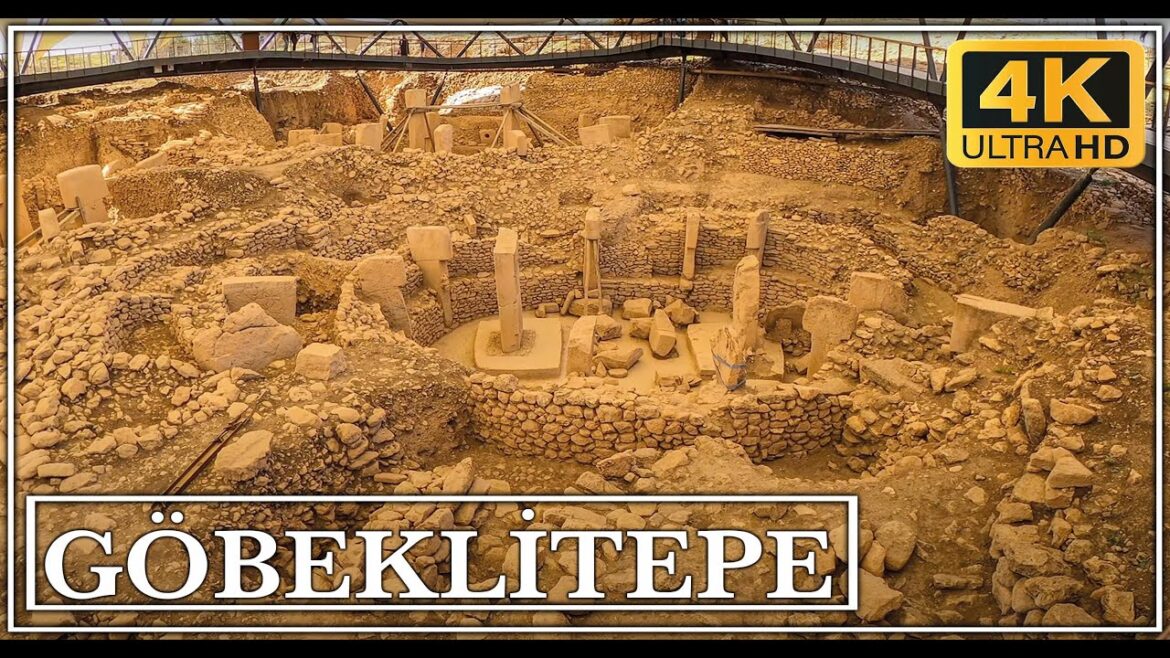Equipments: Go Pro 9 5k Footage
MacBook Pro 13 inches
Final Cut Pro
00:00 Intro/Giriş
00:25 Souvenir Shop and Cafe/Hediyelik Eşya ve Kafe
00:50 History/Tarihçe
03:45 Main Temple/Tapınak
10:34 Around/Çevre
17:30 Closing/Kapanış
ENGLISH
Göbekli Tepe “Potbelly Hill”;known as Girê Mirazan or Xirabreşkê in Kurdish[4]) is a Neolithic archaeological site in the Southeastern Anatolia Region of Turkey. Dated to the Pre-Pottery Neolithic, between c. 9500 and 8000 BCE, the site comprises a number of large circular structures supported by massive stone pillars – the world’s oldest known megaliths. Many of these pillars are richly decorated with abstract anthropomorphic details, clothing, and reliefs of wild animals, providing archaeologists rare insights into prehistoric religion and the particular iconography of the period. The 15 m (50 ft)-high, 8 ha (20-acre) tell also includes many smaller rectangular buildings, quarries, and stone-cut cisterns from the Neolithic, as well as some traces of activity from later periods.
The site was first used at the dawn of the Neolithic period, which in Southwest Asia marks the appearance of the oldest permanent human settlements anywhere in the world. Prehistorians link this Neolithic Revolution to the advent of agriculture, but disagree on whether farming caused people to settle down or vice-versa. Göbekli Tepe, a monumental complex built on the top of a rocky mountaintop, far from known sources of water and to date produced no clear evidence of agricultural cultivation, has played a prominent role in this debate. The site’s original excavator, German archaeologist Klaus Schmidt, described it as the “world’s first temple”: a sanctuary used by groups of nomadic hunter-gatherers from a wide area, with few or no permanent inhabitants. Other archaeologists challenged this interpretation, arguing that the evidence for a lack of agriculture and a resident population was far from conclusive. Recent research has also led the current excavators of Göbekli Tepe to revise or abandon many of the conclusions underpinning Schmidt’s interpretation.[1]
First noted in a survey in 1963, the importance of the site was recognised by Schmidt, who directed excavations there from 1995 until his death in 2014. Since then, work has continued under the auspices of Istanbul University, Şanlıurfa Museum, and the German Archaeological Institute, under the overall direction of Turkish prehistorian Necmi Karul. It was designated a UNESCO World Heritage Site in 2018, recognising its outstanding universal value as “one of the first manifestations of human-made monumental architecture”.[5] As of 2021, less than 5% of the site has been excavated.[6]
TÜRKÇE
Göbeklitepe veya Göbekli Tepe, Türkiye’nin Şanlıurfa il merkezinin 18 km kuzeydoğusunda, Haliliye ilçesine bağlı Örencik köyü yakınlarında[1] yer alan, dünyanın bilinen en eski kült yapılar topluluğudur.[2] Bazı popüler kaynaklarda “tarihin sıfır noktası”[3] nitelendirmesiyle de anılır. Buradaki kazılarda çıkartılan bazı heykel ve taşlar, Şanlıurfa Arkeoloji Müzesi’nde sergilenmektedir.[4] Bu yapıların ortak özelliği, T biçimindeki 10-12 dikilitaşın yuvarlak planda dizilmiş, aralarının ise taş duvarla örülmüş olmasıdır. Bu yapının merkezinde daha yüksek boyda iki dikilitaş, karşılıklı olarak yerleştirilmiştir. Bu dikilitaşların çoğu üzerinde insan, el ve kol, çeşitli hayvan ve soyut semboller, kabartılarak veya oyularak betimlenmiştir.[5]
Söz konusu motifler, yer yer bir süsleme olamayacak kadar yoğun olarak kullanılmıştır. Bu kompozisyonun bir öykü, bir anlatım veya bir mesaj ifade ettiği düşünülmektedir.[6] Hayvan motiflerinde boğa, yaban domuzu, tilki, yılan, yaban ördeği ve akbaba en sık görülen motiflerdir.[5] Bir yerleşim yeri değil, kült merkezi olarak tanımlanmaktadır. Buradaki kült yapıların tarım ve hayvancılığa yakın olan son avcı grupları tarafından inşa edilmiş olduğu anlaşılmaktadır.[7] Bu durumda bölgenin en erken kullanımının Çanak Çömleksiz Neolitik Çağ’a, yani günümüzden en az 11.600 yıl öncesine dayandığı ileri sürülmektedir.[5]
Söz konusu dikilitaşlar, stilize insan heykelleri olarak yorumlanmaktadır. Özellikle D yapılı merkez dikilitaşlarının gövdesinde bulunan insan el ve kol motifleri, bu konudaki her türlü şüpheyi yok etmektedir. Bundan ötürü “dikilitaş” kavramı, işlev belirtmeyen yardımcı bir kavram olarak kullanılmaktadır. Esasen bu “dikilitaş”lar, insan vücudunu üç boyutlu olarak betimleyen stilize tarzda yontulardır.[8]
Göbeklitepe’nin bir kült merkezi olarak kullanımının MÖ 8000 tarihine kadar devam ettiği ve bu tarihten sonra terk edildiği, başka veya benzer amaçlarla kullanılmadığı anlaşılmaktadır.[10]
https://tr.wikipedia.org/wiki/Göbeklitepe


5 Comments
Look forward to watching it !!!!! <3<3<3
Amazing Video.I'm your fan.
Great👏🏻👏🏻
You spent the most of the time recording the wooden trail instead of the ruins located in both sides of the way!, you should have stoped in each site.
İbrahim hocamıza müsade edermisin kardeşim 😁diyen hacı abi kamera olsama İbo cekil kenarı diyecekti